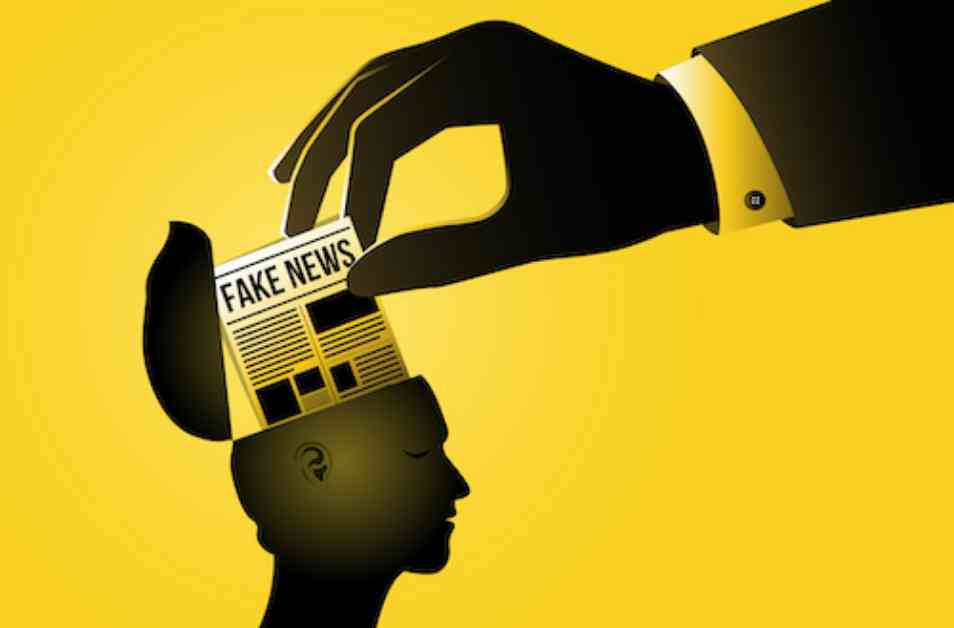In the wake of the pro-Palestinian protests sweeping U.S. colleges, the issue of disinformation has taken center stage in the digital world. From false claims of “Jewish genocide” chants to debunked allegations of Hamas presence, the spread of inaccurate information has reached a fever pitch. In response to this highly charged moment, Columbia University students have launched a fact-checking Twitter account to combat the tide of disinformation. This serves as a stark reminder of how misleading information thrives at the intersection of strong emotions and polarized politics, drowning out facts and reasoned dialogue when they are most needed. This underscores the urgency of developing critical thinking skills for information literacy, especially in the age of artificial intelligence (AI).
The role of technology in disseminating disinformation has been a longstanding issue in global events. With the advent of AI, the deliberate spread of inaccurate information has become faster and more impactful. It is crucial to educate students on questioning sources, recognizing fake news, and becoming discerning consumers of information in the digital age. The addition of AI to the information landscape has further complicated matters by generating and amplifying deceptive narratives, deepfakes, and AI-generated visuals at an alarming rate. This has drawn concern from global leaders, with the World Economic Forum’s Global Risks Report naming misinformation and disinformation from AI as the top global risk over the next two years.
As the U.S. approaches a critical election year, the threat of disinformation looms large. The 2016 and 2020 elections serve as reminders of the significant impact disinformation can have on the political landscape. It is essential to equip young people with the tools to detect authentic information from manipulated content. Therefore, information literacy, particularly in the digital realm, should be integrated into every K-12 curriculum to combat the rise of disinformation and prepare students for an AI-driven future.
Disinformation can manifest in various forms, but it thrives on stories that evoke strong emotions. Issues such as election matters and partisan politics are prime targets for disinformation campaigns. During the COVID-19 pandemic, misleading narratives, including claims that the virus is spread by 5G technology, spread rapidly through digital platforms. Anti-vaccine groups utilized tactics to bypass social media algorithms and disseminate false information. Climate change, another polarizing topic, has also been the subject of disinformation campaigns, with AI-generated visuals used in greenwashing efforts.
In the aftermath of recent events, deepfakes powered by AI have proliferated, spreading false stories at an unprecedented pace. For instance, a fabricated story about Qatar threatening to cut off natural gas supplies garnered millions of views before being debunked. Additionally, the United Nations Relief and Works Agency (UNRWA) has been targeted with disinformation, highlighting the need for vigilance in verifying information sources. The erosion of public trust in institutions due to disinformation underscores the importance of promoting critical thinking and information literacy among the populace.
To address the challenges posed by disinformation and AI, educators must incorporate these topics into their teaching strategies. ‘Prebunking’ has emerged as a proactive technique to build resilience against misinformation. By encouraging critical thinking and imparting knowledge about AI, algorithms, and deceptive practices, individuals can better discern the authenticity of information. Case studies and practical exercises can serve as valuable teaching tools to help students develop data literacy skills and become more discerning consumers of information.
In Finland, media literacy is a core component of the national curriculum, starting from preschool. Students are taught to understand the fundamentals of media and progress to more advanced skills, such as source evaluation. This cross-disciplinary approach cultivates analytical skills across various subjects, leading to a well-rounded education in information literacy. Finland’s success in combating misinformation and fostering trust in news sources serves as a model for other nations seeking to address the challenges of disinformation.
In conclusion, the proliferation of disinformation in the digital age poses a significant threat to society. By promoting critical thinking, information literacy, and a deeper understanding of AI, individuals can navigate the complexities of the digital world with greater confidence. Educators play a vital role in instilling these skills in students from a young age, ensuring they are equipped to discern truth from falsehood in an era of rampant misinformation. Through collective efforts to combat disinformation, we can build a more informed and resilient society prepared to confront the challenges of the AI-driven future.

